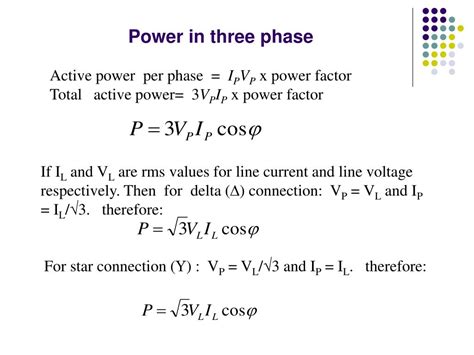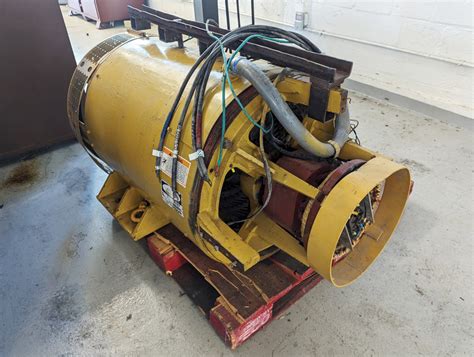Understanding and optimizing power factor is crucial for efficient electrical power distribution and utilization. The power factor, which is the ratio of real power to apparent power, plays a significant role in determining the overall efficiency of electrical systems. In this comprehensive guide, we will delve into 40 power factor tips, covering a wide range of topics from basic principles to advanced optimization techniques, to help you improve the efficiency and reliability of your electrical systems.
Key Points
- Understanding the basics of power factor and its importance in electrical systems
- Identifying and mitigating the causes of low power factor
- Implementing power factor correction techniques and technologies
- Monitoring and maintaining optimal power factor levels
- Integrating power factor optimization with overall energy management strategies
Introduction to Power Factor

The power factor (PF) is a dimensionless number between 0 and 1 that represents how effectively the current drawn from the mains supply is converted into useful work output. A high power factor indicates that the electrical system is operating efficiently, while a low power factor suggests inefficiency and potential for improvement. The power factor is influenced by the type of load (resistive, inductive, or capacitive) and the presence of harmonics in the system.
Causes of Low Power Factor
Low power factor is often caused by inductive loads such as transformers, motors, and induction furnaces, which consume more reactive power than real power. Other factors contributing to low power factor include poorly designed or maintained electrical systems, the presence of harmonics, and inefficient load management practices. Identifying and addressing these causes is essential for improving the power factor and overall system efficiency.
Power Factor Correction Techniques

Power factor correction (PFC) involves implementing technologies or strategies to improve the power factor of an electrical system. Common PFC techniques include the use of power factor correction capacitors, synchronous condensers, and active power factor correction devices. These solutions can be applied at various levels, from individual loads to entire facilities, depending on the specific needs and constraints of the electrical system.
Passive Power Factor Correction
Passive PFC methods, such as the use of power factor correction capacitors, are cost-effective and widely used. These capacitors are designed to supply the reactive power required by inductive loads, thus reducing the burden on the mains supply and improving the overall power factor. However, passive PFC methods may not be suitable for all applications, particularly those with high harmonic content or rapidly changing load profiles.
Active Power Factor Correction
Active PFC devices, on the other hand, use power electronic components to dynamically adjust the power factor in real-time. These devices can provide more accurate and flexible control over the power factor, making them suitable for a broader range of applications, including those with non-linear loads or high power quality requirements. Active PFC devices can also provide additional benefits such as harmonic filtering and voltage regulation.
Power Factor Monitoring and Maintenance
Regular monitoring and maintenance of power factor levels are essential to ensure the long-term efficiency and reliability of electrical systems. This involves tracking power factor meters, performing periodic system analyses, and adjusting PFC devices as needed. Additionally, implementing energy management systems (EMS) can help optimize power factor levels, reduce energy waste, and improve overall system performance.
| Power Factor Level | Efficiency Implications |
|---|---|
| 0.8-1.0 | High efficiency, minimal energy waste |
| 0.5-0.79 | Moderate efficiency, some energy waste |
| 0.0-0.49 | Low efficiency, significant energy waste |

Integrating Power Factor Optimization with Energy Management
Power factor optimization is an integral part of a broader energy management strategy. By combining power factor correction with other energy-saving measures, such as load management, energy storage, and renewable energy integration, facilities can achieve substantial reductions in energy consumption and costs. Furthermore, implementing smart grid technologies and advanced metering infrastructure can provide real-time monitoring and control capabilities, enabling more precise and responsive energy management practices.
Future Directions in Power Factor Optimization
As electrical systems continue to evolve, driven by advances in technology and changes in energy usage patterns, the importance of power factor optimization will only grow. Emerging trends, such as the integration of electric vehicles, renewable energy sources, and energy storage systems, will require more sophisticated and adaptive power factor correction strategies. By staying at the forefront of these developments and embracing innovative solutions, facilities can ensure they remain optimized for efficiency, reliability, and sustainability.
What is the ideal power factor for most electrical systems?
+The ideal power factor is typically considered to be 0.95 or higher, although this can vary depending on the specific application and system requirements.
How often should power factor levels be monitored and adjusted?
+Power factor levels should be monitored regularly, with adjustments made as needed to maintain optimal efficiency. The frequency of monitoring and adjustment can depend on the system's operational patterns and the presence of variable loads.
Can power factor correction be applied to existing electrical systems?
+In conclusion, optimizing power factor is a critical aspect of efficient electrical power distribution and utilization. By understanding the principles of power factor, identifying areas for improvement, and implementing appropriate correction techniques and technologies, facilities can significantly reduce energy waste, enhance system efficiency, and contribute to a more sustainable energy future. As the electrical landscape continues to evolve, the importance of power factor optimization will only continue to grow, making it an essential consideration for any organization seeking to minimize its environmental footprint and maximize its energy efficiency.



